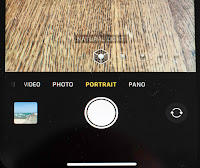Take Better Pictures Using Leading Lines
Have you ever wondered why some pictures immediately draw you in when you look at them? Your eyes find themselves focused on the main subject of the picture. What draws you in?
Science has found a way to track exactly where your eyes are looking as you examine a picture. As you look at a photograph, your eyes tend to scan the picture while you assess what you are looking at. When it is a dull picture, your eyes go all over the place. However, when the photographer has included some simple compositional tools your eyes follow a predictable path as you examine the picture.
One of the tools is the rule of thirds which we discussed in my last post.
Another one of the powerful composition tools are leading lines.
What the heck are leading lines?
Leading lines are natural or man-made lines or curves that you include in your pictures that draw the viewer's eye to the main subject. These lines can be naturally occurring or objects that you include in your composition.
How do I find these lines?
To find these lines, you need to take the time to walk around in the area where you are going shoot. Look at the different potential shooting locations that will give you the best composition.
Remember the rule of thirds as you walk. Look for objects or natural formations that will act as leading lines to help draw the viewer's attention to the main subject.
Leading lines can be straight lines, curves, and “S” curves. Leading lines help direct your eyes to the main subject of the picture.
Leading lines can take many forms. They could be a fence line or the curve of a shoreline. They can be any physical object or landmass that creates a line or curve in the foreground that directs your eyes to the main subject.
Wait a minute!
If they direct your eye to the main subject, can’t they also direct your eye to the wrong place?
Absolutely! When you compose your picture make sure you are not including a strong leading line that will take your viewer away from the main subject. You may have to walk around to get the right position to eliminate unwanted leading lines.
Here are some examples.
Try this experiment.
Let's do a little experiment. Find a magazine with lots of photographs within it. National Geographic would be a great starting point. Take your time to see how photographers use leading lines in their composition.





Comments
Post a Comment
Thank you for your comment.